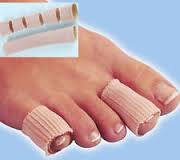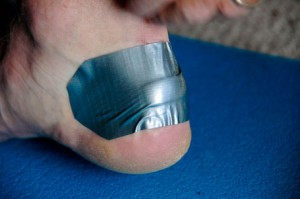YOUR FEET ARE YOUR BEST ASSET
Blisters are the most common problem with feet when hiking, but there are other concerns as well. Impacting hard, rough terrain for miles on end is hard on feet. Just plain old tired out, sore, aching feet can make the end of a hike pretty miserable. Our feet take a lot of punishment while walking and an urban or sedentary body will feel that punishment much more than someone who has conditioned his feet to the work.


FEET CONDITIONING
Just regular walking every day does a great job in preparing your entire body for an extended hike. It improves your breathing, endurance, muscle strength, and conditions your feet. In addition to walking, try these tips:
- Wear your new walking shoes on at least 10 5-mile break-in walks before going on a long all-day hike. Make sure shoe and foot are fitted and matched up comfortably.
- Walk barefoot around your home and outside when you can. This will toughen the skin of your feet. Be careful of stepping on sharp things and stinging insects, of course.
- Wear supportive, comfortable sandals or other open shoes to help keep your feet dry when just walking around town.
- Thick calluses or corns can crack and become a problem. Keep your foot skin tough but elastic by using skin cream. You need the callus as padding against blisters, but you may want to remove excessive callus build-up.
- Keep your toenails trimmed and free from ingrown parts or sharp edges that can irritate skin and wear out expensive hiking socks.
FEET PROTECTION


When you start your walk, its a good idea to protect your feet from blisters and other problems before they develop.
- Wear well-fitting walking shoes. They should not chafe or have pressure points because that will cause blisters. They should be watertight to keep out moisture but breathable to allow foot sweat to escape. They should also have a scree collar to keep out debris.
- Use thick impact-absorbing insoles.
- Wear clean, dry, soft hiking socks with no seams that rub on your feet. A polypropylene sock liner that you replace when your feet get damp helps keep feet dry, free from blisters, and less likely to grow fungus. Do not wear cotton socks since they just soak up and retain moisture.
- Air out your feet at least at the lunch break, but more often if possible, to keep them clean, cool, and dry. Include a soaking in a stream if available, but be sure to let them dry well before walking again.
- Stop and remove dirt, sand, or debris that gets in your boots. Stop now, not a mile down the trail or when its time for lunch.
- Stop and rest your feet when they feel hot, tired, or sore. Remove your shoes to allow your feet to cool down and dry off. Alter your walking pace or adjust the tightness of your shoes.
- If hot spots persist, cover them with moleskin before they become blisters.
BLISTERS
Blisters are certainly the most common problem for hikers. Lack of conditioning and improper caring for your feet while hiking are the major cause of these avoidable pains. Blisters are caused by:
- Heat – generated from your foot rubbing against your sock which is being pressed by your boot.
- Moisture – softens the skin, resulting in less protection. It also reduces the ability of soft socks to smoothly slide on skin, causing more friction.
- Grit – sand, dirt, gravel in your boot will increase the friction in concentrated spots, generating more heat.
So, to prevent blisters, all you need to do is remove dirt, moisture, and heat from your feet. Keep your feet cool, dry, and clean. Following the Feet Conditioning and Feet Protection tips above will do that.
HOW TO TREAT BLISTERS
Do not pierce intact blisters that are deep, rather than just the top few layers of skin. Just apply a callous doughnut to relieve the friction and monitor the blister.
- If the blister has not torn and is full of liquid, pierce it from the side with a sterile needle at its base. Let all the fluid run out.
- If the blister has torn already, carefully cut away the loose skin of the blister and treat the area with antiseptic.
- Allow the blister to dry and harden in the open air for as long as you can.
- When you need to resume walking, put a bandaid or gauze over a torn blister.
- Put a layer of moleskin over the blister area. You may cut a doughnut shaped piece of moleskin that fits around the blister rather than directly on it.
- Check the blister at each stop and give it as much time to dry off as you can whenever you can. Keep it clean and sterilized to prevent infection.

